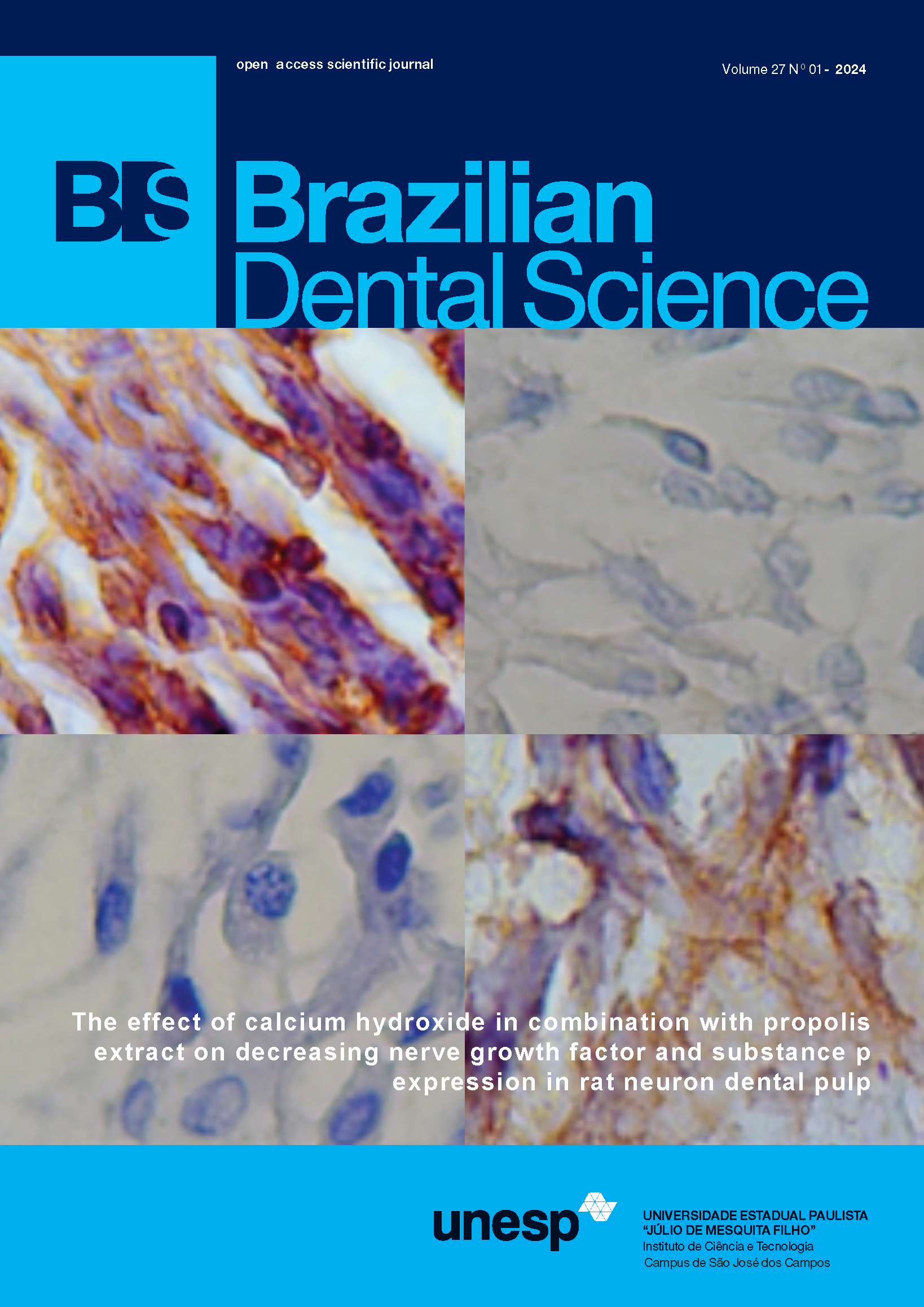Can Scanning Electron Microscopy be used to quantitatively measure dentine roughness?
DOI:
https://doi.org/10.4322/bds.2024.e4015Abstract
Objective: The aim of this study was to determine if SEM used with imaging software could be used to quantitatively determine the extent of dentine roughness due to tooth-brushing. Material and methods: Flat, polished dentine surfaces were subjected to 25,000 cycles of simulated tooth-brushing at 2 strokes per second with a load of 200 g. At the end of the brushing cycle, dentine surfaces were first assessed using profilometry and then subjected to SEM analysis. Ra (average roughness) readings were obtained for profilometric assessment. Using imaging software, the horizontal distance between adjacent characteristic grooves noted on micrographs was measured, ensuring that the middle of each crest of the associated groove was used as the reference point, the Crest-to-Crest distance (C-C distance). These two parameters were examined statistically for correlation. Results: When Spearman Rank tests were utilized the correlation between average Ra and crest to crest measurements was 0.709 (p <0.01). The Bland Altman plot, however, showed poor agreement between the two test parameters. Conclusion: Further work is needed to validate the use of this methodology in the quantitative assessment of tooth surface loss due to abrasion.
KEYWORDS
Abrasion; Bland-Altman; Dentine roughness; Profilometry; Scanning electron microscopy.
Downloads
Published
How to Cite
Issue
Section
License
Brazilian Dental Science uses the Creative Commons (CC-BY 4.0) license, thus preserving the integrity of articles in an open access environment. The journal allows the author to retain publishing rights without restrictions.
=================




























